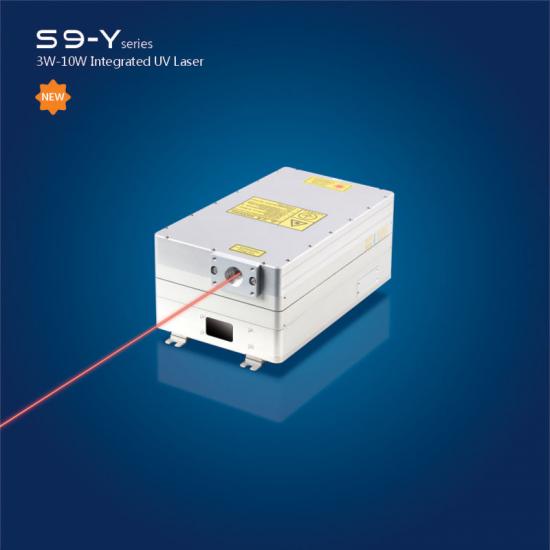Latest Blog
Cutting and Drilling of PCB Materials Using UV RFH ® Laser
Nov 22 , 2021Cutting and Drilling of PCB Materials Using UV RFH ® Laser
In recent years, ultraviolet (UV) wavelength lasers have been proving their worth in many industries when it comes to advanced precision micromachining applications. The driving
factor for the use of UV laser technology as a solution is its ability to cleanly and accurately ablate a wide range of materials at high speed in a cost-effective way.
Furthermore, the shorter wavelength allows tighter focusing, which is beneficial for processing small, high-precision features in a noncontact manner.
Lasers are routinely used in a variety of PCB manufacturing processes including via drilling, depaneling, profiling (cutting), laser direct imaging (LDI), repair, trimming, and
marking. Laser technology being a non-contact process completely eliminates mechanical stress on the material. Burr formation and micro-cracking in material are also avoided.
The tighter focus achievable with UV lasers can controllably remove small volumes of material, reducing deposits of ejected material on the circuits. Precision micromachining
achievable with Uv lasers allows more circuits to fit on a single panel, increasing the net usable area. Moreover, UV wavelengths are absorbed by a variety of materials in PCBs,
from copper to polyimide films, thus providing a onesolution-for-all-materials-and processes kind of flexibility. For example, the high beam intensity achievable with tighter
focus UV can remove copper, while lower beam intensity achieved by reducing laser power can cut dielectric material without damaging the bottom copper layer.
CUTTING AND DRILLING IN FLEX PCB MANUFACTURING
The trend in flexible PCB technology is towards miniaturization:thinner substrate materials and smaller hole sizes for both blind via holes and through vias, with concurrent
increases in feature density. These small dimensions cannot be achieved using mechanical methods or longer-wavelength lasers. UV wavelengths allow focusing the beam to a spot
size sufficiently small for drilling the required hole dimensions—on the order of ø100 µm down to a few tens of microns in diameter. Figure 2 show holes drilled in a Flex PCB
panel, comprised of a 25 µm-thick polyimide (PI) layer sandwiched between two 12 µm-thick copper (Cu) layers, using Spectra-Physics RFH ® 355-15 laser. Both ø30-µm blind vias
and ø100-µm through-vias were drilled. Such vias can be drilled at very high speeds—limited not by the laser, but rather by the speed and accuracy of the galvanometer-based
scanner.
Besides drilling, laser cutting is also used in flex PCB manufacturing. Whether it be straight-line singulation or contoured profile cutting, high-speed cutting with
good quality is required. The RFH UV laser was also tested for this process, with an optimized parameter set yielding .
CUTTING RIGID FR4 PCB PANELS
Another important manufacturing process that can be addressed using UV lasers is cutting of thicker, rigid PCB panels composed of fiberglass-based polymer composites such as FR4. Cutting may be necessary for depaneling (singulation) of finished devices from the larger PCB panel or for making contoured profile cuts. Figure 4 shows a 0.445 mm thick piece of FR4 cut into a 10 mm square using a 15 W RFH laser.The laser’s relatively shorter-ns pulse width and variable pulse frequency allows for controlled heat input into the material. Also, with careful process optimization, the formation of carbon debris has been minimized. As with many applications, there is a tradeoff between throughput and quality. For best throughput, continuous rapid scanning cuts through the material are performed in few seconds, but with slightly higher carbonization. On the other hand, for best quality cuts, the process is slowed down by introducing cooling delaysbetween scans, which yields reduced throughput and much lower carbonization. The piece shown was cut at a net speed of 7.5 mm/sec.

uv laser | green laser | Ultraviolet lasers | uv dpss laser | nanosecond laser | UV laser source | Solid State Lasers
RFH is a new family of UV and green diode-pumped solid state (DPSS) Q-switched lasers that deliver an unprecedented combination of performance, reliability, and cost. Based on Spectra-Physics’ It’s in the Box™ design, with the laser and controller combined in a single, compact package, RFH 355-15 uses field-proven technology to output >15 W and >300 μJ per pulse of UV with a wide repetition rate range of 0 to 500 kHz, high pulse-to-pulse stability and excellent TEM00 mode quality for tens of thousands of operating hours. The RFH laser is designed specifically for micromachining applications in a 24/7 manufacturing environment where system uptime is critical. UV ns lasers are proving their worth in many industries when it comes to advanced precision micromachining applications, especially in high speed and high quality PCB related applications. RFH provides disruptive cost-performance: lowest cost of ownership UV in the industry with no compromise in features, performance, or reliability. The price point is ideal for the highly competitive PCB-related laser materials processing applications.